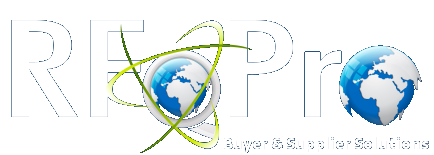Nine (9) Simple Suggestions to Improve Your RFP Response(s)
Preparing outgoing tenders are skills which are a critical component of the professional buyer’s job description, however, responding to a tender or RFP is a critical component to the success of any business. If you fail to succeed at receiving the award as a result of your tender responses it is likely you will not be in business very long.
Nine (9) simple suggestions which will increase your chances at winning more tenders.
- Pre-Game Preparation: We love the sports or game analogy and preparing to respond to a RFP or a tender is no different. Prior to the game, athletes are practising and completing training to ensure they are successful on game day. Responding to a tender request is no different. Preparation is key and there are many areas you can prepare ahead of time or prior to responding to a RFP or RFQ request.
- Training or investing in learning will always result in a great rate of return and improve chances! Keep all certifications and credentials current and readily available.
- Tender responses almost always require details or specific profiles on your team, approach and methodology, management, price and past experience.
- With the often restricted timelines to complete the tender response, it is crucial that time is allocated to ensuring the best possible solution to the project’s requirements is presented at the best possible price. Most effort needs to be dedicated to providing a solution and not a re-hash of past experience.
- Obviously, a successful track record of implementing or past experience in similar activities will be evaluated and contribute to your success or failure for any tender. But this doesn’t imply spending countless hours to locate and compile a summary of past experiences is time wisely spent – this can be done now and on an ongoing basis.
- All tender requests are likely to call for an array of details which exhibits your experience in past or similar activities. Information required almost always consists of the activity name, location and duration, client, project value, key personnel by name and title, and a synopsis of the activity.
- Aggregating this activity is clearly destined to be a challenge if it requires searching for staff and past associates for details, relying on memory, etc. The answer is to encourage the habit of compiling relevant information as soon as a project begins, and keeping the information current.
- This can be made even easier by capturing information from the start of a project consistent with how a future tender might require the information presented.
- Major organizations request a Project Data Sheet (PDS) for each project example that you are including with your tender response. This is often a single page that captures all the information required in the evaluation of your response.
Can I use each PDS just as it is for any tender I submit?
Keep in mind that although this template is consistent with what is currently requested, it is important to check exact tender requirements before submission to ensure compliance.
Secondly, each tender has different considerations because each project is often unique, so a standard response is rarely successful. Likewise, each project your company has completed would have contained a range of activities or approaches. So, instead of simply adding a PDS example to a (RFP) tender response, consider what the tender’s (project’s) focus is, and ensure your PDS examples emulate this. Often a slight re-write to place greater emphasis on a key piece of relevance is important. So customize your response to reflect the client’s needs and wants.
The information that the PDS template captures is ideal for submissions direct to client, or as a data capture tool for drawing information from for developing capability documents, case-study information and the like.
Frequently, when dealing with some small to mid-sized corporations the RFP response process can be quite nerve-racking, time-challenged and often without a process. Responding to RFQ’s or RFP’s can become the most unpleasant task, however, whether preparing a response for a complex project, or a proposal direct to a client, it is important that time is spent coming up with the best possible approach or solution to ensure implementation produces the very best results. Taking time away from this critical aspect of proposal development to prepare Project Data Sheets or other typical response details is not time well spent.
See VR220-Product Data Sheet.doc in the Vendor Pack if you are interested in looking at a sample template. Our pack has a variety of tender response templates which will help you produce a professional (RFP) tender response and help you improve your chances of winning more tenders.
